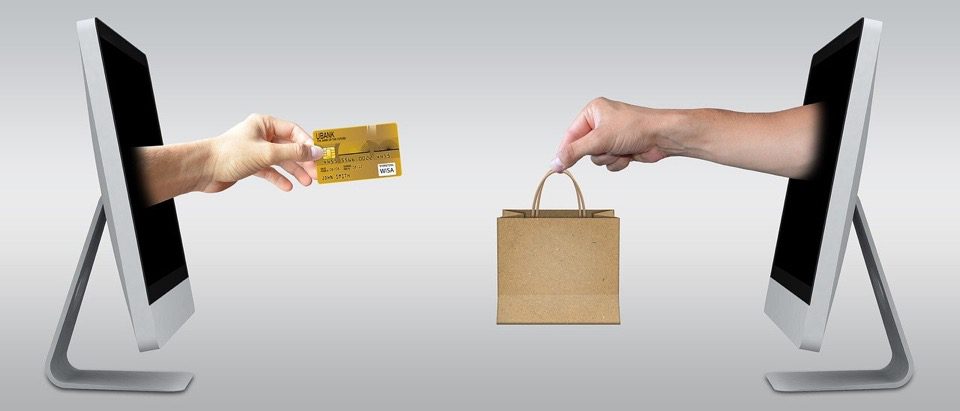What Is Payment Processing And How Does It Work?
That image up there represents the worst possible scenario for your business, losing a willing customer to factors entirely out of your control. For a small business, payment processing can be the toughest piece of the ecommerce puzzle. So far, you’ve got your great product in place, lined up with an authentic and reliable brand voice. But you’re just not sure what to do about the actual money. Where will you store the names and addresses? If it all sounds a little overwhelming, don’t worry, it’s easier than it looks.
The answer to this dilemma is a payment processing system. Quite simply, a payment processing system is how you accept money from your customers. Think of it as an intermediary between your customer and your business that makes it much easier for transactions to take place. Some of the advantages of using these systems include:
- Security: According to Forbes, cybercrime jumped up 31% in 2021 compared to 2020. A payment processing platform goes a long way to ensure security for ecommerce players. Customers need to know their card and other personal details won’t be lost to a hack before they make a purchase. By either storing or not storing card details (depending on the customer’s wishes), processing platforms take away the massive hassle of building a secure payment platform for small business owners.
- Speed: Avid online shoppers tend to save their details with payment processors for faster checkouts. If your business happens to use one of these platforms, your potential customer won’t have to move a finger to complete their purchase. Bringing convenience and speed to your business will only incentivize further shopping, boosting conversion rates.
- More options: Payment processing services offer more choices to shoppers on ecommerce platforms. Along with the usual offerings of credit and debit cards, these platforms are branching out and bringing in support for an increasing variety of payment options. Amazon does this well by offering customers the option to pay later, while others have support for rarer options such as e-checks.
How Exactly Are These Payments Processed?
Technically, there are 3 elements that make up the entirety of a payment processing system.
Payment gateway → Payment processor → Merchant account
Payment gateway
A payment gateway is a middleman for a middleman. It acts as an intermediary between your store and the payment processor. The job of a payment gateway is to send the data (card details, name, etc.) to the payment processor. Small business owners in ecommerce that use gateways to process payments don’t have to worry about security, as they come protected with PCI and SSL encryption.
There are two types of payment gateways:
- Non-integrated gateways: These payment gateways are hosted on the provider’s website. If you’ve shopped online, you’ve noticed that when it comes to completing a payment, you’ll get taken to a different website where you are asked to enter details. The advantage of non-integrated gateways is that they provide the highest level of security to customers. On their part, buyers also feel more confident entering their data into a proper payment provider rather than a new website they are unfamiliar with.
- Integrated gateways: An integrated payment gateway is one built right into your website. It allows customers to complete their purchase right there and then without being taken to a separate website to enter their details on. Integrated gateways are more complex as ecommerce providers have to build their own payment processing gateway into their website, this requires a high level of technical expertise that every small business owner may not have. The trade-off here is that integrated gateways offer a lot more flexibility and customization options compared to non-integrated ones, as it’s up to the creator to tweak the features according to their needs.
The main downside here is that business owners do have to pay transaction fees for each payment, usually a flat amount and a percentage. On top of this cost, there is the added one-time investment of adding the gateway and subscription fees. Determining the best checkout process for your customers and customizing your website accordingly is critical here.

Payment processor
The payment processor receives the details from the gateway and verifies them. If the data provided by the customer checks out, the payment goes through and the money is transferred to the merchant account. Some examples of payment processors include Paypal and Stripe.
Merchant account
This is essentially a variation of a generic bank account. It’ll be used by your business to accumulate payments from the payment processor and also to issue refunds if requested by the customer. On the other hand, you might end up not needing a merchant account at all, as this work is handled by the ecommerce payment processor for a fee. In the event that you do decide to get one, it’s worth researching the various fees charged by different institutions for setting one up as they can vary significantly.
Great, Where Do I Start?
Back there, you probably noticed we said there are technically 3 elements of a payment processing system. This is because most new providers sell integrated solutions for payment processing to ecommerce websites. What this means is that as a business owner you don’t have to waste time looking into and investing in three different services when one will do it better. All that remains is picking a provider.
Paypal
Paypal is the market leader for payment processing. Capturing approximately 55% market share for payment providers, it eclipses other options. Factors that make Paypal popular include low outages, a trusted brand by customers, being easy to set up and use, and withdrawals being instant. As an added bonus, the facility they provide for international payments can make currency conversion hassles a thing of the past.
It’s not all a big plus though. The reason Paypal has been seeing increasing competition over the years is the fact that their fees can be high compared to other, newer ecommerce payment processors. Merchants wanting to increase their margins can look at these newer players and benefit from their undercutting strategy.
Stripe
One of the aforementioned newer players is Stripe. What Stripe brings to the table is a developer-friendly API that’s much, much more customizable than Paypal. With 19% of the market share, Stripe is now the second biggest payment processor, indicating growing trust on the part of the customers. The customizability here might remind you of integrated payment gateways, and for good reason. The USP here is a merge of integrated and non-integrated payment gateways, meaning businesses can switch up the API according to their particular needs.
Square
Square has both offline and online benefits as an ecommerce payment processor. Not only does it process credit and debit cards online, but it also integrates this service with an offline point of sale (PoS) devices. If your business has an offline component as well, it might be beneficial to look into Stripe. They boast a variety of PoS devices like terminals and card readers along with an intuitive system that lets new business owners jump in without any problems. As a newer provider, they’ve only got a 2.33% market share compared to the others.
Which One Is Best For You?
We won’t beat around the bush, there is no ‘right’ answer. As frustratingly diplomatic as that might sound, systematically choosing the right ecommerce payment processor for your business will always reap higher dividends. When choosing a service, ask yourself these three questions:
#1 – Do they support the payment methods that I use? Do they do it in a way that suits my business?
Right off the bat, every payment processor you can choose from will provide debit and credit card service. As a business owner, the trick is to go beyond that and understand which niche services your particular target audience might prefer. A large part of this is understood from creating buyer personas and conducting surveys.
For example, take a business that caters to cash-strapped customers. In order to access this segment of buyers, they’d need a payment processor that provides ‘pay later’ facilities to ecommerce companies.
Plan your strategy out with the customer in mind as the ultimate goal. Picking the right payment processor and checkout process can be the difference between missing out on an entire segment of buyers.

#2 – How much am I paying?
This one is straightforward. Using the best payment processor in the world would still lose you money if you couldn’t afford the transaction fees. Conduct a thorough study of your business’s current and potential finances to see which provider offers you the best balance of efficiency in terms of processing and money.
#3 – Is it safe?
With digital payments taking center stage, cybercrime is here to stay. Customers are growing savvy to signs that a website might not be trustworthy.
You’ll want to use an ecommerce payment processor that is PCI-DSS certified. This certificate ensures that the provider isn’t storing any personal data provided by customers after their purchase. You generally don’t have to worry about this as every major provider will be certified, look at it as something to look out for if you’re thinking outside the box for a newer payment processor.
Revenue-boosting Strategies at Checkout

Well done on picking a payment processor! Unfortunately, the work doesn’t end there for a successful business. The enterprising owner will go the extra mile to optimize their checkout process to yield the most revenue it possibly can.
- Add guest service: Almost 80% of all carts were abandoned in March 2021, that’s not an exaggeration. While part of this is due to customers that had no intention of buying the product in the first place, a significant percentage comes from frustrations with the checkout process.
Requiring your customers to create an account without an alternative is a sure-shot way of driving them away. Adding the option to checkout as a guest is considerate both to your customer and to your bottom line. As an alternative, you can also add the option of linking their social media channels to log in instead.
- Assure returns: Displaying your return policy (and actually having one!) instills a massive amount of confidence in potential buyers. If shoppers know they have the option to return their product, they’re more likely to see your business as self-assured and reliable. Reliable payment processors for ecommerce make this step easy, as all you have to do to issue refunds is hit a single button.
- Transparency: Nothing aggravates a buyer more than adding a bunch of items that look great to their cart, only to hit the checkout button and see that the final costs are way higher than they should be.
As a business, you should always have a detailed breakdown of taxes, packaging, and shipping charges on your checkout page so your buyers don’t have to hunt around for that information. Implementing transparency in your checkout process builds trust with buyers and encourages them to spend more even on their first purchase.
- Optimize where you can: Tiny changes can have big ripples when it comes to payment processing in the ecommerce space. Optimizations like reducing the number of fields customers have to fill when registering can speed up the process and make them more likely to complete it.
An example of this might be having one field that says ‘Full name’ rather than two separate fields for first and last names. A more prominent example is how food delivery companies will automatically detect your location rather than ask you to fill it in.
Blast off!
Once you’ve got a strategy for a payment processing system in place and optimized your checkout process to best utilize that system, the sky’s the limit. That said, always make an effort to keep up with the latest and most popular payment options and update your website accordingly.
Check out how BESTWEB helps businesses pick the best payment processors for their ecommerce venture and boost their revenues with innovative strategies.

